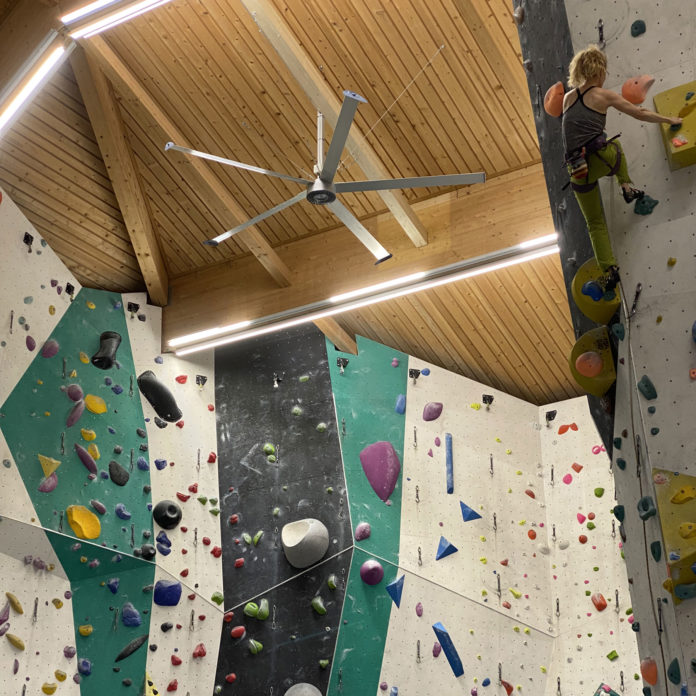The Why
Climbing is mainstream. Go to most any relatively large city in North America and there exists a climbing gym, usually several.
Long gone are the days of flourishing gym businesses in poorly lit, musty, old buildings with dirty holds on the wall.
Today’s climbers vote with their dollars, and demand well lit, clean, modern facilities in which to spend their time. After all, for many climbers, the climbing gym has become their “third place,” the most frequented place outside of their home and place of work.
Staying relevant with a modern, clean facility is arguably as important as having high-quality routesetting. Traditional dirtbag climbers of yesteryear who only embrace a gym based on the quality of its setting are still present in the consumer landscape, but they are now noticeably in the minority.
Part of a modern facility’s offering is a comfortable environment, which is best achieved through a well-designed HVAC system. The nicest gym in the world is not going to produce happy patrons if the environment is too hot, cold or noisy.
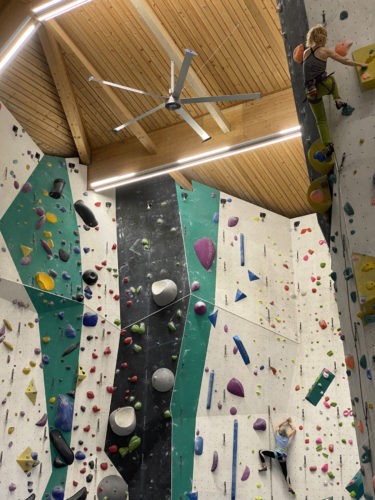
HVLS fans have been used in all parts of the industry for decades now, and they should be incorporated into gym HVAC design. Walk into any Costco, airport, warehouse, etc., and you’ll see them; the large, slow-moving fans circulate hot air down in the winter and move cool air all around in the summer, providing a nice interior breeze. That breeze is specifically beneficial to climbers, allowing for hands to remain less sweaty, which means less chalk, leading to cleaner holds and a cleaner space. That may be a bit of a stretch, but you get the point―air movement is nice and simply feels good.
The Science
Thermal air stratification is real and occurs when heated air rises due to it having a lower density relative to ambient air, which results in a floor to ceiling thermal gradient. The heated air stagnates at the ceiling of large facilities due to a lack of air circulation. Elevated air temperature at the ceiling level increases the rate of heat loss through the building envelope and requires more heating to be used so that patrons of the facility feel warm throughout their session. This benefit is felt even more in taller, roped climbing gyms, where the top of a route can feel too hot and the bottom too cold.
The most prominent, practical and economical way to reduce this temperature gradient is through the use of HVLS fans.
In a study conducted by ASHRAE (The American Society of Heating, Refrigerating, and Air Conditioning Engineers), it was determined that HVLS fans can reduce the temperature gradient in large warehouses from 8.7 degrees F to .7 degrees F.
Quite significantly, in cold months this resulted in a decrease in natural gas heating by 29%, which totaled roughly $4,150 over the winter season:
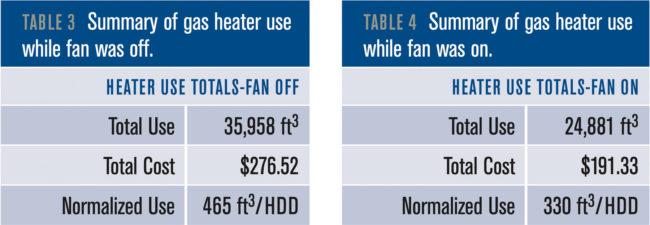
During the study, computational fluid dynamics models were used to illustrate what the eye can’t see and just how clearly HVLS fans impacted temperature gradients throughout the space:
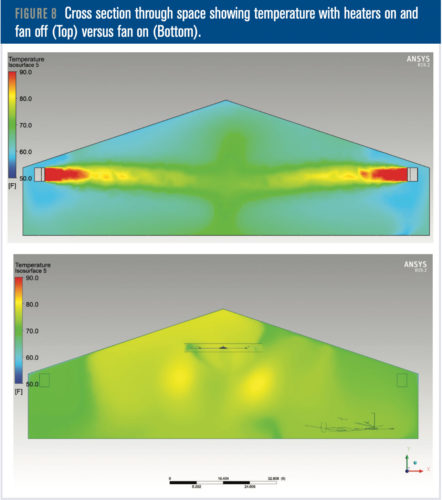
The Verdict
The climbing gym landscape is one that is becoming increasingly more competitive. Providing a clean, modern, comfortable third place for patrons is beneficial to your bottom line as well as your climbing community. In a world of near double-digit inflation, saving up to 29% on your utility bills doesn’t hurt either.
In addition to its class leading air filtration and hold cleaning products, ClimbLab also engineers and builds HVLS fans uniquely designed for application in the climbing market, with features that include:
- An enclosed IPX7 dust and water proof motor to protect against airborne chalk.
- A gearless, Direct Drive Permanent Magnet Motor that results in zero maintenance and 70% less energy consumption when compared to geared alternatives.
- An integrated LED light to avoid flickering if installed directly below lights.
- No noise: a low 38dB motor provides comfort without distraction.
- Designed specifically for ease of installation, saving significant cost vs competitors that often require professional installation.
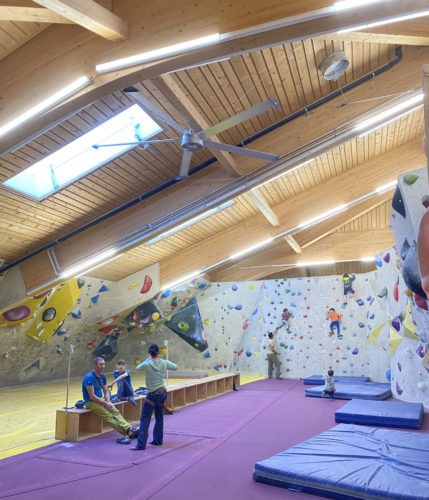
ClimbLab HVLS fans come in five different sizes (from 9 to 21 feet in diameter), offering the perfect solution for any space. HVLS fans are easily added to existing gyms or new constructions and are well understood by most mechanical contractors and engineers. The fans are easily incorporated into new HVAC design, often resulting (the author’s personal project experience) in reduced HVAC needs and real cost savings overall.
For more information or to place an order, please reach out to your HMH Outdoors Account Manager or to sales@hmhoutdoors.com.
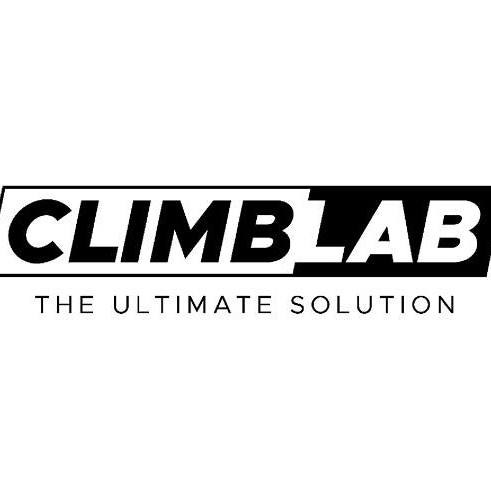
Dirty, chalky gyms have too often been the norm in the climbing gym industry, and Denmark-based ClimbLab is on a mission to change that. Informed by decades of real-world engineering and climbing experience, ClimbLab offers best-in-class hold cleaning, air filtration and cooling systems that save gym operators time and money. Now available in the U.S. and Canada via HMH Outdoors.




